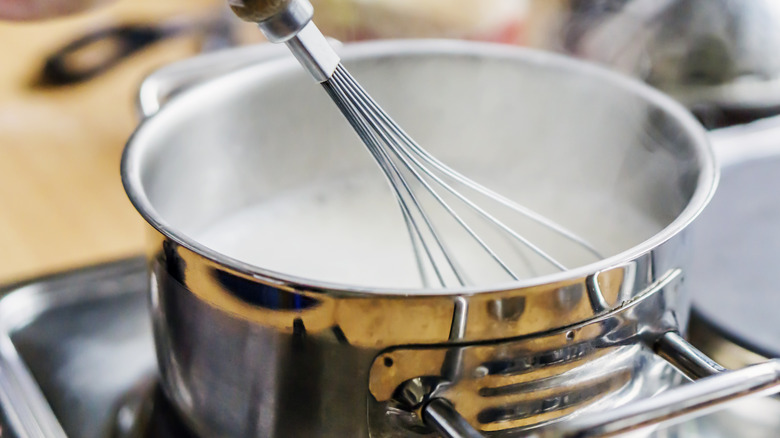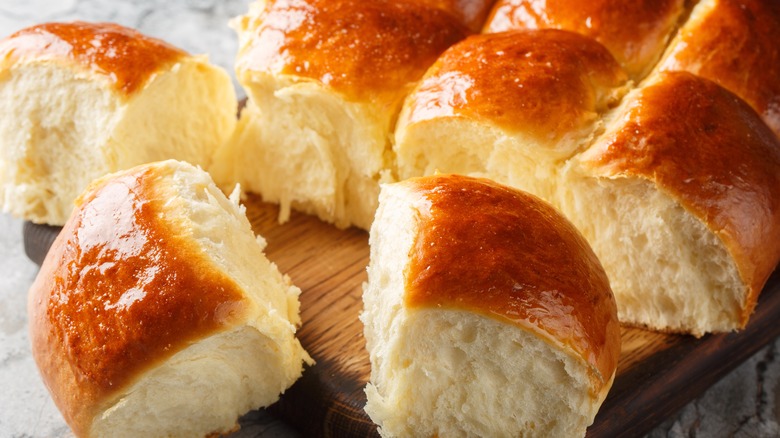What Exactly Does It Mean To Scald Milk?
At first glance, "scalding" doesn't sound like something you'd ever want to do to while cooking. But some recipes do call for scalded milk, which has different properties from regular milk. This simple process involves heating it to 180 degrees Fahrenheit, the Goldilocks zone where its structure starts to change, but it's not hot enough to boil over or burn.
Before pasteurization, this process also helped kill harmful bacteria in raw milk. Since most milk is pretreated these days, you may be wondering if it's still necessary to scald milk for some recipes. It's no longer a question of food safety, but if you do a lot of baking, it's still worthwhile to learn this technique.
You can scald milk on the stovetop, setting the heat to medium and stirring frequently. If you like, you can use a thermometer to check the temperature, but your eyes can also tell you when it's hot enough. Look for a light froth on the surface, a few wisps of steam, and tiny bubbles around the edge of the pan. Once you reach this temperature, remove it from the heat. At this point, the bonds in the whey protein molecules should have broken down, allowing the milk to interact with other ingredients in ways that can improve your food's texture or flavor.
Putting scalded milk to work
One of the most common places to use this ingredient is in milk breads, like soft, pull-apart rolls or cinnamon swirl bread. When you're making dough, the naturally occurring whey proteins in the milk can weaken the formation of gluten and interfere with the action of yeast, hindering the rising process and leading to a denser loaf. However, if you weaken those proteins through scalding, you get a better rise, a lighter texture, and a more tender crumb. Just make sure you allow the milk to cool to about 110 degrees first so it doesn't kill the temperature-sensitive yeast!
Another common place to put this technique to work is in desserts, such as ice cream, custard, or pastry cream. Scalded milk can absorb the flavors of herbs and spices easily, allowing you to infuse the delicious tastes of cinnamon, vanilla, or lavender throughout the dish. Of course, its warmth also makes it easy to melt other ingredients like chocolate, so it's a great choice for hot cocoa. Wherever you put it to use, it's a quick and easy skill to add to your kitchen repertoire.

